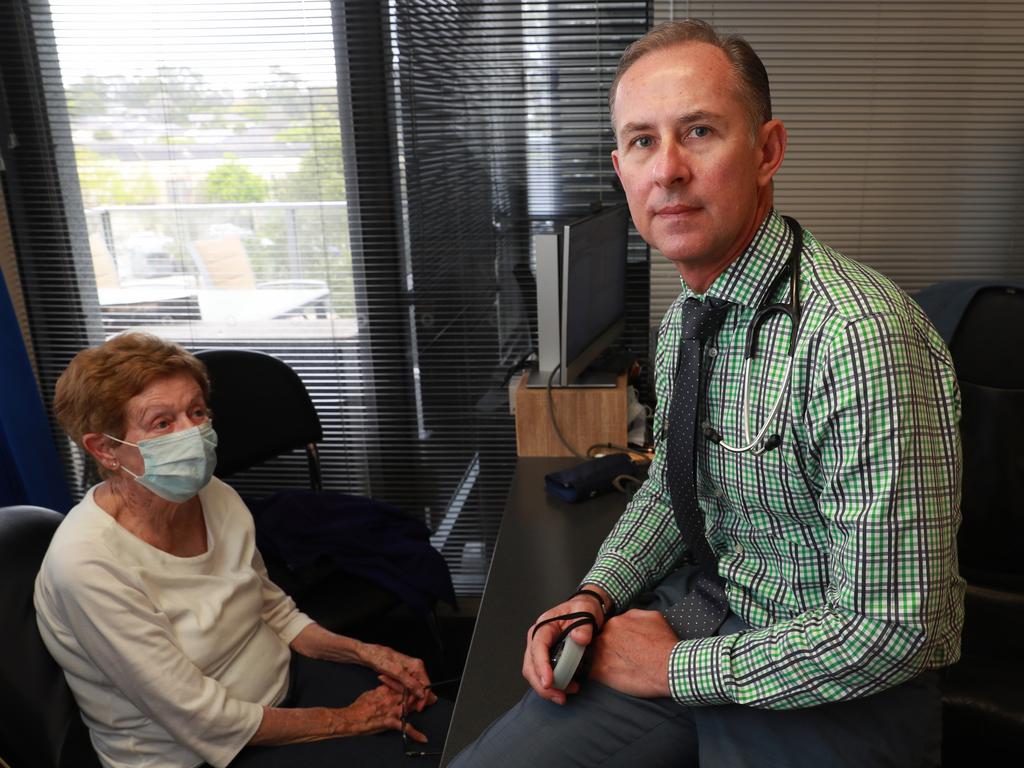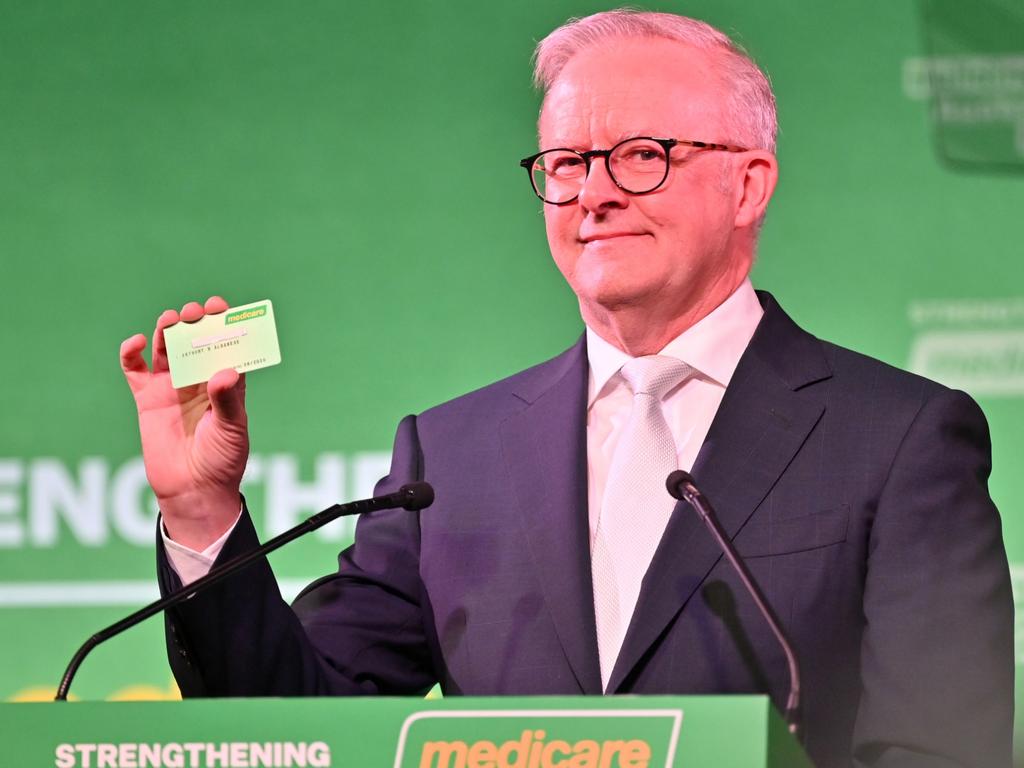Quarter of GP clinics won’t bulk bill, Health Department warns
In stark advice to the government, Mark Butler’s mega-department has questioned how many doctors a proposed Labor measure would encourage to join its amended bulk-billing practice incentive program.

Nearly a quarter of doctors’ clinics are unlikely to take up the Medicare bulk-billing incentive that helped sweep Anthony Albanese’s government into a second-term landslide, top bureaucrats warn.
As part of stark advice provided to the government, Mark Butler’s extensive Department of Health, Aged Care and Disability has questioned whether Labor’s proposed 12.5 per cent incentive split between practices and providers offered “sufficient incentive” for doctors to join the amended bulk-billing practice incentive program.
The warning was delivered alongside damning modelling that estimated nearly 25 per cent of clinics would not be drawn into the cornerstone of Labor’s campaign agenda through the current financial sweeteners being offered by the Albanese government.
As the Prime Minister’s 94-strong majority of MPs were preparing to take their seats in the House of Representatives for the first time since the election, the Health Department’s hard-headed analysis of his centrepiece election policy is a sign of the potential difficulties Labor will face in implementing the promises that helped it gain its greatest victory since World War II.
“There is a risk the percentage of the 12.5 per cent incentive split between practices and providers is not considered a sufficient incentive for practices or providers to join the Program,” the public service brief to Mr Butler states.
“Some patients will still face out-of-pocket costs. The department estimates 23 per cent of clinics are unlikely to join the program based on financial incentives.”
Labor in February announced that it would make the “single largest investment in Medicare” on record, delivering 18 million more bulk-billed GP visits a year via a massive $8.5bn in funding.

Mr Albanese spruiked the policy consistently through the election, flashing his own Medicare card as he declared “all you should need to see a doctor for free in Australia is your Medicare card … not your credit card”.
As part of his election pitch, the Labor leader claimed Peter Dutton was planning to “cut bulk billing off at the knees” and that a Coalition government would dismantle Medicare. But The Australian revealed in the midst of the election campaign that Labor’s flagship health policy had sparked a growing backlash from GPs and medical leaders, who insisted many doctors wouldn’t make the switch and not all patients would be bulk-billed.
The Health Department indicated it would brief the government on the views held by practice groups and peak bodies over the bulk-billing policy, noting there was already concerns from health groups over other elements of Labor’s agenda.
This included concerns from GP groups over proposals to implement a “blended” Medicare funding model, the policy’s proposal that all patients at a practice be bulk-billed to qualify for the higher rebate, and for increasing the scope of practice of other professions, while some states had a lower “risk appetite” around allowing more health practitioners to administer medications and vaccines.
The government’s $8.5bn in extra funding – to be delivered over four years – aims to lift bulk-billing rates to 90 per cent by 2030 through an increase in the Medicare payment to doctors from $42.85 to an expected $70 for every appointment lasting 20 minutes or less.
As part of the incoming brief to government, the Health, Aged Care and Disability Department said the portion of GP clinics that bulk billed all services had halved in the past three years, falling down to 26 per cent of all clinics. However, the department noted more clinics may choose to join the program in order to remain competitive with practices that were bulk billing.
Responding to the department’s warnings over challenges that could stymie progress on bulk-billing rates, Mr Butler said “Australian patients and families will save hundreds of dollars a year in out-of-pocket costs”.
“By 2030, nine out of 10 visits to the GP will be free,” he told The Australian, adding: “The Albanese government is getting on with the job of strengthening Medicare.”
Government sources also pointed to other modelling by the Health Department that estimated about 4800 general practices would be “in a better financial position if they adopt full bulk billing”, meaning they would gain more in additional Medicare payments than they would lose in patient fees.
Along with questioning whether the new incentives would be high enough to reach the bulk-billing rates envisaged by the government, the department also noted projects of health spending overall fell short of the level required to maintain current funding as a percentage of gross domestic product.
“Analysis … shows that health spending as a percentage of GDP will continue to increase long term (but) is projected to fall significantly in the short term,” the brief states.
“In 2022-23, health spending accounted for 9.9 per cent of GDP, approximately 0.5 per cent lower than in 2021-22. Of this, the Australian government contributed 40.2 per cent, state and territory governments contributed 30.6 per cent (and) non-government sources funded the remaining 29.2 per cent.
“The government’s desire is to not significantly increase the proportion provided to health.”
Despite the predicted drop in health spending as a portion of GDP, the department noted the more “fiscally constrained environment” Labor needed to navigate when enacting policies in its second term.
“We are acutely aware of the importance of returning Australia’s budget to a stronger, more sustainable fiscal position,” the department said.
“There is a need for fiscal discipline and cost minimisation to ensure the government has space to deliver on its agenda.
“Health, disability and aged care system financing is a significant proportion of Australian government expenditure. This will also be a time requiring some tough decisions on spending, with continually increasing demands on the health dollar, and with international forces driving considerable economic turbulence.”
Department secretary Blair Comley also pointed to the “significant resources” that had been spent in the last term on the myriad of reviews commissioned by Labor.
“I would suggest that ‘even more doing, less reviewing’ would be a good mindset for this term,” Mr Comley said in remarks included within the incoming government brief.
“In your first term, more than 70 reviews were commissioned, consulted on or published … with each review, stakeholder expectations continue to rise. Reviews often absorb significant time, ministerial and departmental resources, which may be drawn from areas delivering on your commitments.
“The costs of reviews are not limited to the consultant costs, but also to flow-on departmental and administered costs. The department will experience a 6 to 10 per cent decrease in internal resourcing from July 1, 2025, with further decreases expected in 2026-27.”
Mr Comley said there was an urgent need “to focus on improving health and care system productivity”, with the greatest gains in boosting productivity in recent years seen in the treatment of cancer.
“Productivity growth has been particularly strong in the treatment of cancers, suggesting advancements in treatments, rather than across-the-board healthcare reforms, have been the major drivers of growth,” the government brief states.
“Despite significant progress in saving lives, there have been fewer gains in improving the quality of life.”
Shortfalls were particularly noticeable in the treatment of Indigenous Australians, with the department noting “none of the health-related Closing the Gap targets are currently on track to be met by 2031”.
The department pointed to concerns around the age of many Aboriginal community Controlled Health Services facilities, noting many were “20 to 40 years old and require significant renovation or replacement to meet clinical and accreditation standards”.








To join the conversation, please log in. Don't have an account? Register
Join the conversation, you are commenting as Logout